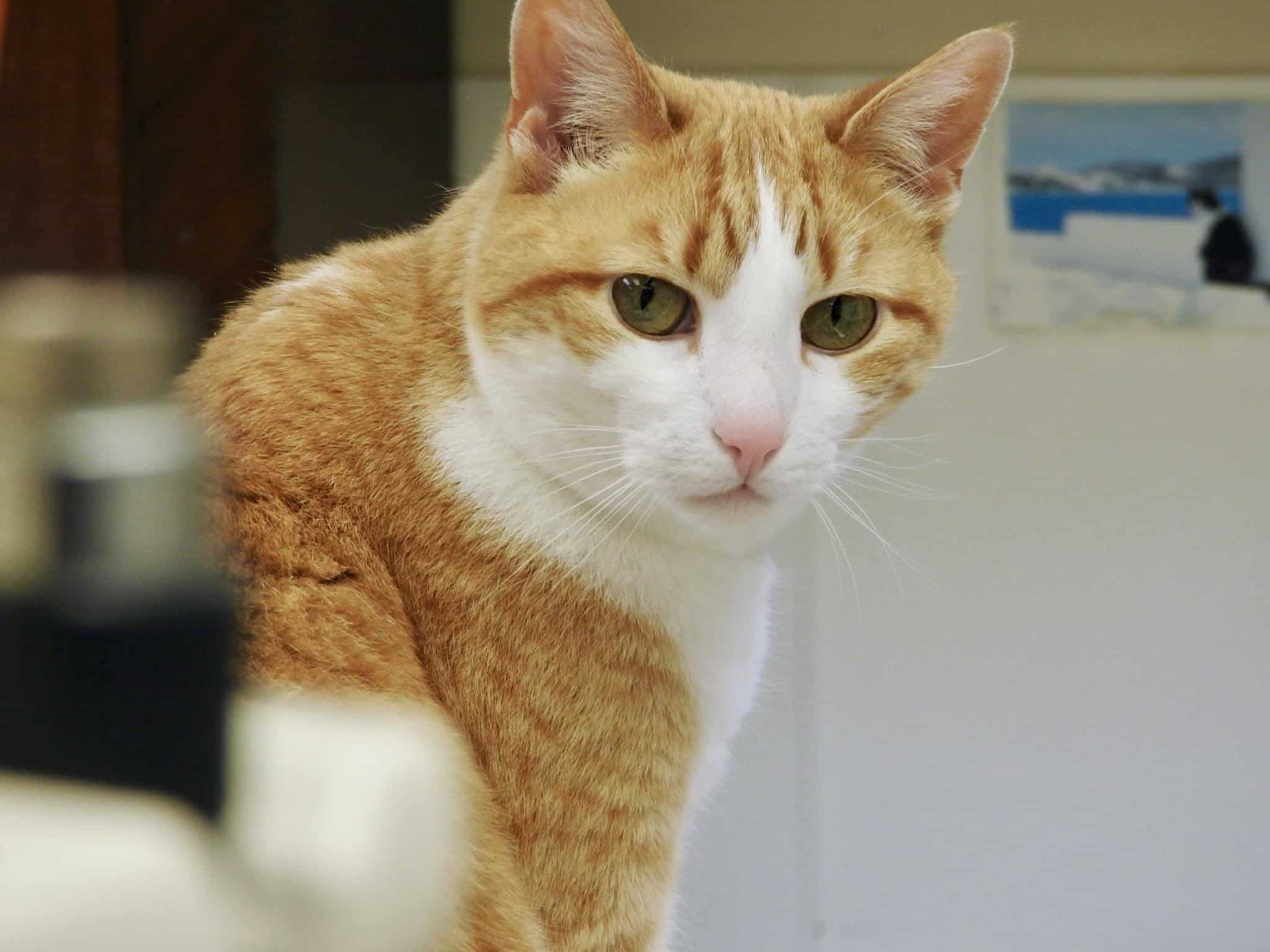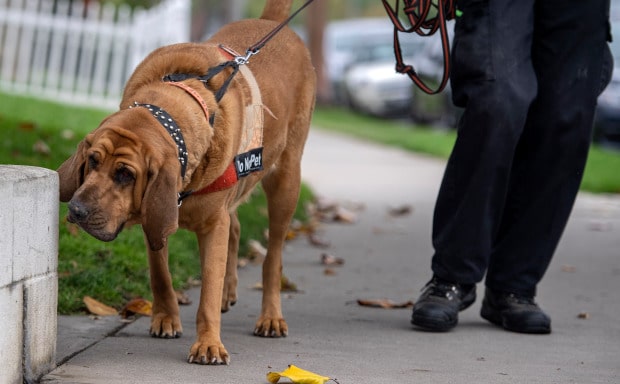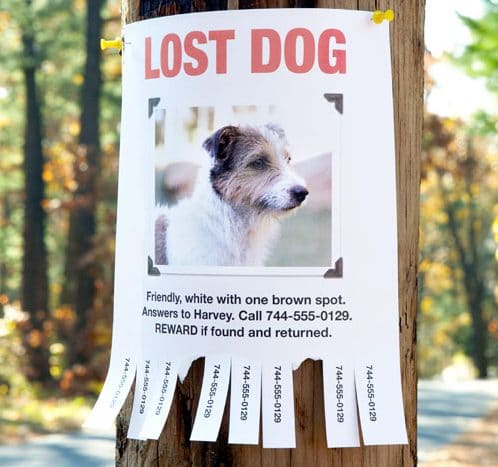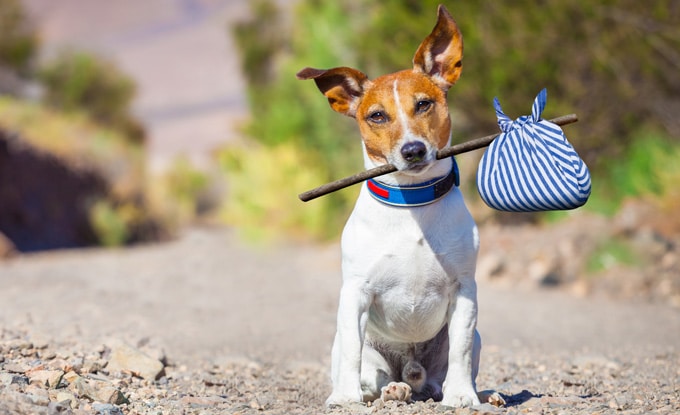Ultimate Guide To Find a Lost Pet
Table of Contents
- 1 Check Lost Pet Websites
- 1.1 Advertise in Local Newspapers
- 1.2 Use Facebook Advertising
- 1.3 Print Up Flyers
- 1.4 Visit Local Organizations
- 1.5 File a Lost Pet Report
- 1.6 Inform Local Vets and Pet Hospitals
- 1.7 Search the Neighborhood
- 1.8 Use Favorite Foods and Snacks
- 1.9 Call Neighbors, Friends, and Family
- 1.10 Search on Local Social Networks
- 1.11 Post on Social Media
- 1.12 Visit Your Pet’s Favorite Spots
- 1.13 Update Your Pet’s Microchip Records
- 1.14 Share in Social Media Groups
- 1.15 Enlist Professional Pet-Finding Help
- 1.16 Final Thoughts
Check Lost Pet Websites
When a beloved pet goes missing, you need to act quickly. Start here to learn all the ways to find a lost pet! From where to look first to who to notify, here’s the ultimate local guide to how to find your lost pet. Your steps include verifying your pet’s information, performing a physical search through the neighborhood, and using online resources to send out your animal’s data and notify people nearby to be on the lookout.
As soon as your pet is lost, you can check a lost pet app or lost pet website for information. Most platforms allow you to search for your animal or make a post to notify others about their disappearance. Some sites let you input microchip information, while others require a photo or description of your animal.
Consider these sites for starting your online search, and check out their accompanying mobile apps for on-the-go use, too:
- Center for Lost Pets lets you report your lost animal or post that you’ve found a pet.
- FindToto is an online platform that sends out Missing Pet Alert notifications to your neighbors via smartphone and social media. The service is pay-per-use, with different pricing plans to send almost immediate notifications to your neighborhood.
- Lost My Doggie has free lost or found listings that go out to local shelters, vets, and rescue groups. You can also pay for packages that “boost” your missing pet’s exposure through “Amber Alert” notifications and Facebook ads.
- Pawboost has free local alerts for your missing pet, and you can also pay to get Facebook ads and other exposure to get your pet home quickly.
- TabbyTracker is a kitties-only site for reporting lost and found felines.
- Get Me Home allows you to report lost and found pets and register your tags.
- PetFBI shares lost and found reports and offers tools for creating flyers.
- FidoFinder is the partner of TabbyTracker and claims to be the largest public database of lost dogs.
- Petfinder is a site that lets you search for pets to adopt—and it can also lead you to a pet who’s been missing for a while.
- FoundLostDogs is a city-based tool for reporting lost and found pups.
- FindingRover uses facial recognition to help identify your pet if someone finds them and uploads an image. This is a helpful preventative tool, too, if you sign up and create your profile before your animal goes missing.
- Helping Lost Pets is another database of missing and found pets, plus adoptable animals who need homes.
- Lost Pet U.S.A. lets you search for a lost pet or register your animal just in case.
- Where Pets Are Found offers lost, found, and adoption listings.
- Pet Amber Alert works similarly to the human child Amber Alert; your pet’s information goes out to individuals and organizations all over your city. The company even processes flyers and faxes them to area residents, animal shelters, and veterinarians.
Advertise in Local Newspapers
If your pet has been missing for a few days or longer, getting the word out in different formats could help. See if your city or township offers lost animal listings in the newspaper. For a small fee, you may be able to run an ad notifying the community of your missing pet.
You can also use online sites like Philadelphia Craigslist to publicize your pet’s status. With online publishing sites, ads usually come up immediately or within an hour or so. Other services could take a day or two to publish, while newspapers may require a few days or a week.
Use Facebook Advertising
Facebook advertising is a tool businesses can use to promote their services. But for pet parents, it can also be a powerful and affordable way to micro-target local folks with your missing pet flyers. Facebook’s micro-targeting allows you to advertise only to people living within an area as small as one square mile of where your pet went missing!
Only your closest neighbors will see your advertisement in their Facebook feeds and even if you’re not “Facebook Friends,” they will see your ads and hopefully interact with and share them. These campaigns cost as little as a few cents and can circumvent the problem of reaching people through their private Facebook profiles.
Print Up Flyers
Although we live in a digitally connected age, a lost pet poster can still work wonders for your missing dog or cat. Using a recent photograph—in color—can draw attention. Posting flyers along your street and at major intersections helps increase visibility.
Think about posting flyers in nearby cities, too, as your pet could have traveled farther than you might expect. Whether on foot or in someone’s vehicle, your dog could be several cities over, and a decent flyer can help spread the word.
Make sure your flyer uses bright colors, bold prints, and is large enough to catch the eye of both passersby and drivers. PetFBI even offers a lost pet template you can plug your pet’s details into and then save as a PDF and print.
Visit Local Organizations
Typically, each city has its own animal shelter or animal control office to handle lost pets. Humane societies and rescue organizations can also be excellent resources, as community connections can help publicize your pet’s disappearance.
In the Main Line and Paoli areas, consider contacting organizations like:
Check in daily to see if any animals matching your pet’s description have entered the facility.
File a Lost Pet Report
In most locations, you can visit and submit a lost pet report with animal shelters and animal control offices. Target locations within a 60-mile radius of your location to make sure you cover all the areas your pet could have traveled to. Visit nearby shelters daily, if possible, to check for your dog there.
Places like the Pennsylvania Humane Society and Radnor, Pennsylvania Township allow you to submit lost pet reports online, which saves time and increases your chances of being reunited with your pet.
Inform Local Vets and Pet Hospitals
If your pet visits a local veterinarian for regular care, notify your vet that your pet is missing. With microchipped pets, your vet may be able to update the database with a missing alert. Plus, they can help notify other pet owners in your area, via social media and flyers, to keep an eye out for your cat, dog, or other critter.
Stop in at your neighborhood veterinary offices and pet hospitals to ask if you can put up flyers and spread your pet’s details. Main Line vet and Main Line pet hospital locations like Paoli Vetcare are happy to aid your search by posting flyers and sharing information.
Search the Neighborhood
Searching on your own is the logical first step in finding a lost animal. Check your street and nearby cross streets, looking for signs of your pet. Make sure to call your pet’s name and listen carefully for signs that they may be hiding.
Especially for pets who could be injured, being out on their own may feel scary. Many animals will hide, even if their favorite human is nearby. This is especially true with recently adopted animals or those with difficult backgrounds. Be patient and friendly when calling your pet try to remain calm, and speak in reassuring tones.
Use Favorite Foods and Snacks
While you look for your pet, keep snacks handy in case you need to lure him or her out of a hiding place. The smell of a favorite treat can be a great motivator to come out of hiding. Snacks can also help ease your pet’s anxiety over being lost or hurt.
Also, leave your pet’s favorite food,some fresh water, and bedding outside your home while you search. If possible, set a humane trap and place the food and water inside. This way, if your pet returns while you’re out searching, the enclosure will hold them until you return.
Call Neighbors, Friends, and Family
As you search your neighborhood, check with neighbors, friends, and family for possible sightings. If your neighbors have pets, your dog or cat might still be nearby with playmates. Conversely, if family or friends live in your city and you often visit them, consider that your pet may have a special trip in mind.
Plus, informing friends and family means they may share details of your pet’s status with their connections, too. Both online and off, having all the support you can get could make the difference in bringing your pet home as soon as possible.

Search on Local Social Networks
If you don’t already connect with your neighbors via PATCH or Nextdoor, these services can help you get the word out about your missing pet. Like Facebook, these sites let you share alerts, send messages, and post pictures. The difference is that these are locals-only sites, connecting you with people who live nearby and may even recognize your pet.
To save time, consider joining neighborhood social networks before you experience missing pet problems. Nextdoor, for example, requires address verification. By joining as soon as you move into a new neighborhood, you can ensure you’re well-connected in case a pet goes missing and you can be a support to your pet-owning neighbors in their time of need
Post on Social Media
Posting on social media is an excellent first step when searching for your lost dog. Because so many people use Facebook and other social media platforms daily—often multiple times per day—you may be able to get many eyes on your post. Consider adding multiple posts, too, and even tagging friends who live in your area. Most people are happy to share posts tohelp find a lost pet and get them home to their family.
Visit Your Pet’s Favorite Spots
When searching for your lost pet, you should retrace your steps and visit locations you’ve recently been to together. Check your pet’s favorite spots, such as the local dog park or other places you tend to visit.
Remember to leave flyers there, too, in case your pet returns when you are not there to retrieve them.
Update Your Pet’s Microchip Records
Missing Pet Network no longer lists missing pets (since social media is usually the go-to for pet finding help these days). However, they do give helpful advice on how to find a lost dog—such as updating your pet’s microchip records.
Whether you forgot to register your pet’s microchip after implantation or if the info is outdated, you can still make changes even years later. Each company that manufactures microchips has its own registry. Visit the Animal Humane Society’s website, where they offer a list of microchip manufacturers.
The American Animal Hospital Association maintains a tool you can use to look up your pet’s microchip ID number and find out which company you need to contact to update information or mark your pet as lost.
If your pet winds up at an animal shelter or veterinarian clinic, the staff there will scan for a microchip. Having the most current information on the registry gives you the best odds of reuniting with your furry friend ASAP.
Share in Social Media Groups
Also post in local animal groups, yard sale sights, and any other city- or neighborhood-based groups that allow off-topic posts. You never know when someone who has seen your pet may be interacting in a social media group. Plus, your shared membership means they can likely contact you if they have information that could help your search.
Groups for PA locals include Lost Cats of Chester County PA, Lost and Found Pets of Chester and Delaware County, and Lost Dogs Pennsylvania. Larger groups like Lost and Pound have a national reach, too.

Landa Coldiron, a bloodhound handler who specializes in finding lost pets
Enlist Professional Pet-Finding Help
If time continues to pass with no leads, consider consulting or hiring an expert like Hound Hunters of NEPA (dogs), Sherlock Bones, Missing Animal Response, Mission Reunite, Lost Pet Professionals (dogs only) or Lost Cat Finder.
Especially if you suspect your pet is injured or has traveled far from home, a professional dog-finding (or cat-finding) service can contribute tools and implement strategies you would not likely be able to access on your own.
Final Thoughts
Hopefully, one of these tools or techniques will help you get your lost pet home. In most cases, pets enjoy their adventures and return home in good health. But just in case, it’s always a good idea to take your furry friend to your vet for a checkup. After you are sure they are no worse for the wear, you can relax together and enjoy being reunited.
Consider Joining the Paoli Vetcare Family
We invite you to meet Dr. Jay Rowan — the best-reviewed veterinarian on the Main Line. You can book an appointment online now. If you’d like to support our animal hospital, please shop for your pet food and medications through the Paoli Vetcare Online Pharmacy.

Lost Pet Resources




























